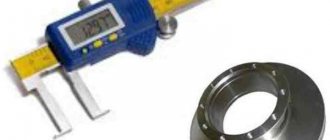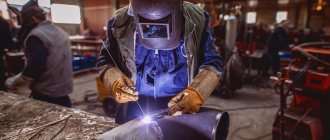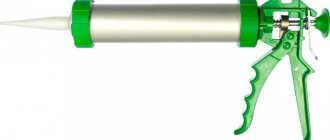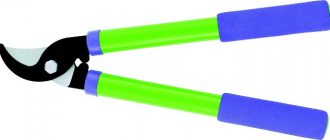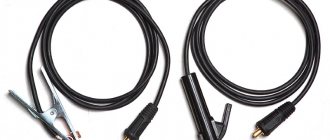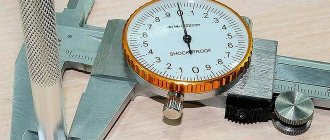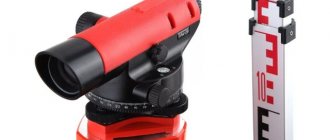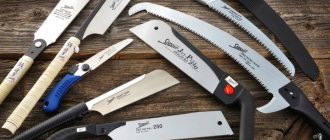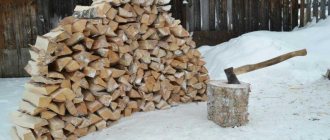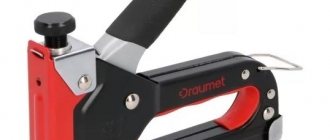One of the most commonly used power tools in everyday life is a drill. After all, with the help of a modern drill you can not only hang a shelf or a picture, but also assemble furniture (it can screw in and out screws), polish and sand surfaces, stir paint, and the like. Naturally, the question arises of how to choose the right drill in all the variety of models offered, which we will try to answer in this article.
Let me start with the fact that, like most other construction tools, drills are divided into amateur (household) and professional. Their main difference is that household drills are designed for short-term use, while professional ones can be used for several hours in a row and nothing will happen to either her or her motor. This explains the lower weight, price, as well as the greater convenience of amateur drills. In addition, both drills can be powered from the mains or from a battery.
Basic characteristics of the drill.
Now about the characteristics, the main ones being:
- power,
- number of revolutions (rotation speed),
- drill rotation speed adjustment,
- possible maximum hole diameter.
Power.
The standard power range of the drill is from 300 to 1500 W, but there are models with higher power. When choosing the optimal drill for yourself, do not chase maximum power, focus on the materials that will have to be drilled, for example, if you work only with soft material (wood or some other), then a drill with a power of 500 W will be enough for you.
Drill rotation speed.
This is the maximum number of revolutions per minute that the drill can make at idle, that is, in the air. Therefore, if your drill does not have high power, it can be completely compensated for by a high number of revolutions. Yes, and if you use a drill for grinding or polishing surfaces, then in this case you also cannot do without high speeds. The most optimal value for this indicator is 3000 rpm, but again I would like to point out that in some situations it is better to prefer a more “revolving” drill.
Drill rotation speed adjustment.
It is very important that the owner of the drill has the ability to regulate the rotation speed. This will allow you to tighten screws and self-tapping screws at low speeds, and at high speeds you can drill holes in very hard materials.
Possible drilling diameter.
It is worth paying attention to this characteristic when operating the drill; this will prevent it from burning out the motor during its active use. As a rule, the packaging of a conventional drill indicates this indicator for steel and wood, and the packaging of an impact drill indicates this indicator for brick and concrete.
Cartridge type.
Pay attention to the type of cartridge. It can be toothed or quick-clamping. In the serrated version, the drill is secured with a special key, which tends to get lost, in addition, it takes a lot of time to replace it, but the price of drills with this type of chuck is more attractive.
In the quick-clamping version, the drill is fixed by slightly pressing the chuck, which is very convenient when changing the drill frequently.
In addition to the regular and impact drills, you can find other options in stores.
Drill for home - how to choose the best option
A home craftsman simply must have a tool like a drill in his arsenal. Agree that you often need to drill something and you simply can’t do it without a drill. Hang a shelf, tighten a self-tapping screw, drill through metal or wood - all this is done with a drill. How to choose a tool, what a home craftsman should pay attention to when purchasing - some useful tips.
Household or professional?
All power tools are divided into 2 types - professional and household. The question arises - what is the difference and which drill to choose for the home, household or professional? By and large, the difference between a household and a professional tool is the mode of operation; you can work with a household drill without distraction for 15-20 minutes, after which you should take a break and give the engine time to cool. With a professional drill, you can work a full shift without resting at all. That's the whole difference.
Now ask yourself a question - will you work from home for 8 hours without a break?
Of course not, well then why buy a professional one; for home needs, a household tool is quite enough. Of course, if you have a certain amount for the purchase and you can afford the cost of a professional one, then it is better to take a professional drill, it will serve you for a long time, and when used in “household” use, such a drill will work for many years.
Which company is right for your home?
Of the companies producing household tools, the following brands should be noted first:
1. SKIL is a branch of Bosch, the household tools segment. Skill drills are reliable, strong, durable, and can withstand even intense loads. User reviews are positive, warranty from the manufacturer is 2 years.
2. Black and Dekker is a fairly well-known company that produces only household tools; the orange color is a distinctive feature. High quality, 2-year warranty, only positive reviews from grateful users.
3. “Zubr” - a Moscow brand that is gaining popularity, is positioned as a domestic instrument, but the assembly is Chinese. By the way, the quality of the drills is not bad; they offer a 3-year warranty, which is a lot. This means that the manufacturers are confident in the quality. By the way, if you had a drill, then the “Bison” is a continuation of the “Uragan” line. Hurricane drills are just super, all my friends have them, they can be repaired, they don’t kill you.
4. Stern (Stern) - the most famous tool, such as the manufacturer is Austria, but this is pure China, and of low quality. However, its very low price has made it popular, with many people buying Stern drills for their home and working with them. Of course, if you follow the rules and do not overheat the instrument, then even the Stern will last a long time.
5. DVT, Hammer, ProRab - Chinese tools of approximately the same class, the most advertised of course is the Foreman, but the quality of all is approximately the same level. Low prices also allowed them to conquer the segment of cheap tools; for the home, of course, nothing more is needed.
Well, that’s probably all, we’ve gone through the brands, now let’s look at what you should first pay attention to when choosing a drill for your home.
Engine power
Of course, the most important parameter is power. The optimal power for a home is considered to be 700-800 Watts; this will already be a powerful drill that can be used to tighten thick screws. After all, in addition to the main functions, the drill performs a bunch of auxiliary ones - it turns screws, mixes mortar, cement, varnish and paint, and so on. Therefore, if the drill is powerful, you can knead the putty using special mixers for paint, putty or glue. However, above 800 watts, the drill will already be heavy and bulky, so, for example, turning screws will no longer be convenient. Therefore, 700 watts is the golden mean for a home drill; you can do all the housework.
Speed adjustment
Why do you need to adjust the speed on a home drill? First of all, to make it convenient for her to drill. After all, first you drill at low speeds and only then press harder. It is simply impossible to mark the drilling point on the metal without adjusting the speed. Also, tightening self-tapping screws - if the drill is not adjusted, then it immediately starts at maximum speed, so it is impossible to tighten the self-tapping screw. The speed can be adjusted either by pressing the start button or by using a special regulator on the start button.
Reverse (reverse)
An important feature is that the presence of reverse on the drill is mandatory. Why is reverse needed? First of all, reverse is used when tightening and unscrewing screws. If, in order to save money, you use a drill as a screwdriver, then you need to buy a tool with reverse action. After all, how can you unscrew a screw from wood if there is no reverse? No way, so be sure to take it with reverse. The reverse switch is located directly above the start button, on the right and left.
Punch function
Most often, most drills come with impact drills, that is, on the top of the drill there is a switch between impact modes and drilling without impact. very often an impact drill is confused with a hammer drill. The difference is that with a rotary hammer the shock is electric, tens of times stronger, while with a drill the shock is caused by the sprocket hitting teeth on teeth. An impact drill can only drill through brick; it won’t take concrete. But to drill concrete you need a hammer drill. If you initially take a drill to drill bricks, then take a more powerful one, 1000 watts, this will help strengthen the blow. By the way, the harder you press on the tool when drilling with an impact, the stronger the impact. When drilling metal and wood, the impact must be turned off.
Drill chuck - quick-release or keyed?
There are 2 types of chucks for clamping drills - standard with a key and quick-clamping. If you are buying a drill solely for drilling and do not plan to work often, then take a regular chuck with a key - it is more reliable and secures the drill more tightly. Well, if you plan to work at speed (finishing, repairs), then a quick-release chuck that saves time - you can instantly replace drills or rearrange the bit. However, such chucks are not clamped very tightly; there have been cases when the chuck involuntarily unwinds and the drill falls out.
Here, in principle, are the main characteristics that you should pay attention to when choosing this essential tool.
Another note: Jigsaw - we work with comfort
Drills with and without impact.
Regarding the choice between a drill with or without impact, I will say that, again, you need to focus on the surface that you will drill.
If you often have to work with concrete or stone (natural, artificial), then I generally recommend purchasing a hammer drill. If a drill is needed for domestic use (no more than a few holes in a concrete wall, as well as drilling other materials), then an impact drill should be your assistant.
Well, if your walls are block, and you will mostly be working with soft materials, then a regular drill will be enough for you, since the impact mechanism can split the soft surface.
Useful little things and accessories for drills
Leading manufacturing companies supplement their tools with all sorts of devices that make work easier or make it more productive. This primarily includes special soft handles. They reduce vibration to a minimum, which allows you to work longer, or rather, without feeling tired. The drill can be equipped with a built-in flashlight, which can be very useful when working in hard-to-reach places. The latest innovation in the field of improvement of drills is a special device for collecting dust (built-in vacuum cleaner). It not only collects up to 90% of the generated dust, but also serves as a guide, ensuring the perpendicularity of the drill to the surface in which drilling is performed.
Well, the last plus is a suitcase in which not only a drill can be stored, but also the tools and accessories necessary to work with it. Very comfortably.
Dust collection kit
Cordless or corded drill?
Well, when choosing between a battery- or mains-powered drill, be guided by whether there is constant electricity in the place where the work will be carried out, and how difficult the drilling points are to reach. If the place of work does not have these characteristics, then it is better to purchase a powered drill.
It is both more powerful and easier to maintain, especially if you decide to buy a professional drill (after all, almost all of them work only from the network).
That's all about how to choose a drill.
No. 3. Types of drills by purpose
Depending on what set of functions a drill has, the following main types of tools are distinguished:
- an ordinary drill, it is sometimes called a hammerless drill;
- hammer drill;
- drill-driver;
- drill mixer;
- angle drill.
All these modifications differ significantly from each other, including in price, so when purchasing it is so important to be aware of the purpose of using the tool.
Regular drill
This is a drill without any bells and whistles. It does not have a hammer function, so it can only be used to drill wood, drywall, metal and other not very hard surfaces. This tool is suitable for carrying out minor repairs in a country house, barn, or wooden house. Conventional drills without a hammer function can be cordless or powered.
Impact drill
An impact drill will be needed for those who are going to drill holes in concrete, brick, stone and other hard materials . This tool costs less than the simplest hammer drill, but has some limitations. Such a drill will not withstand constant work with dense materials - it will quickly break. In addition, frequent drilling in concrete and stone can negatively affect the accuracy of conventional drilling. If you regularly work with dense materials, then it is better to take a hammer drill.
The impact drill gains the ability to pierce hard materials thanks to its special design. During operation, not only rotational action is transmitted to the drill, but also impact. If in a hammer drill the impact is achieved thanks to a complex electromechanical or electro-pneumatic unit, then in a drill the impact is achieved due to the presence of two ratchets. One is located inside the drill, the second is attached to the chuck. When two elements are connected, the chuck and drill begin to move in the axial and translational direction, thereby providing the function of chiselling, or impact. If necessary, the impact function can be turned off, the ratchets open, and the drill operates as normal. However, some models do not provide the ability to turn it off - be careful when choosing.
A drill with an impact function is more expensive than a regular drill, but cheaper than a hammer drill. Plus, it is also lighter than a hammer drill, so it can be called a universal home tool . When choosing an impact drill, pay attention to the power of the tool. For the shock function to be normal, this figure must be at least 800 W. Also pay attention to the reverse rotation function and the presence of a safety clutch.
Drill/driver
It makes sense to choose a drill/driver when you also need a tool for tightening/unscrewing screws, self-tapping screws and self-tapping screws. In screwdriver mode, such a drill has a low rotation speed and high torque; in drill mode, the opposite is true. The device cannot be called completely universal, since such a drill is not suitable for drilling concrete and brick.
Drill mixer
A drill-mixer differs from a regular universal drill by the presence of special attachments included in the kit, which allow you to conveniently mix liquid and semi-liquid compositions. The design of the tool, as a rule, provides special handles for comfortable grip while mixing. The drill mixer is suitable for mixing putties, adhesives, paints and other mortars with a volume of up to 10 liters and allows for more thorough mixing than with the manual process.
Angle drill
As the name suggests, such a tool is designed for drilling holes in the most inaccessible and narrow places that cannot be reached with a conventional drill. The design of the device is distinguished by the presence of an angular gearbox and the location of the rotating shaft perpendicular to the body. Such drills, as a rule, have low power and there is no impact function to speak of.
An angle drill is a very specific tool, so it is better to take a regular model and, if necessary, use a special attachment - it is cheaper and in most cases more reasonable.
Selecting the speed and frequency of drill blows
You can delve into “higher matters” and try to figure out the difference between tools with 2600 rpm and 3000 rpm. But there is no point in doing this, since it is impossible for an ordinary user to feel the difference (professionals do not always notice either). It is important that you can set a lower speed, since it is better to drill wood and metal at minimum speed. Smooth start - it is also important to work accurately when necessary. These are important characteristics of an electric drill and you need to pay attention to them.
Now a little about the impact function. There are 30,000 beats per minute, there are about 50,000 beats per minute. Here the difference is more sensitive; drills with high performance drill concrete a little better. But don’t bother yourself too much, since a hole can be made with 30,000 blows, it will just take a couple of seconds longer.
Types of drills
There are a lot of models on sale, with different prices. To simplify the task of buying a drill, first determine the purpose. So, mainly household and construction options are divided. The former are cheaper and have less power and basic functionality.
Modifications:
- shockless - suitable for wood, plastic, metal;
- impact - universal, capable of drilling concrete products;
- battery - autonomous option for short-term work;
- corner - model for drilling in limited space;
- screwdriver - a tool for assembling and disassembling furniture, installing sheet materials;
- mixer - designed for mixing mortars;
- hammer drill - used to create holes in heavy structures.
The first five categories are used both in household and installation and construction work. Mixers and hammer drills are often purchased by master builders. This technique is large in size and weight. They are not needed at home.

